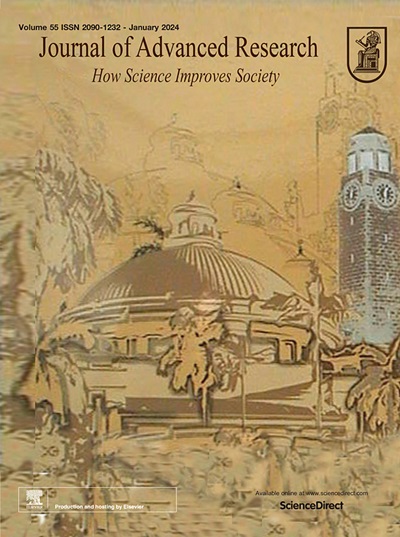A machine learning platform for genotype-specific cardiotoxicity risk prediction using patient-derived iPSC-CMs
IF 13
1区 综合性期刊
Q1 MULTIDISCIPLINARY SCIENCES
引用次数: 0
Abstract
Introduction
Drug-induced Torsades de Pointes (TdP) has led to withdrawal of several drugs from the market. Individuals with inherited cardiac channelopathies are at increased risk due to their underlying electrophysiological vulnerability.Objectives
We aimed to develop a machine learning (ML) platform for disease-specific cardiotoxicity using patient-specific induced pluripotent stem cell-derived cardiomyocytes (iPSC-CMs) combined with high-throughput microelectrode array (MEA) recordings.Methods
We generated genetically confirmed and phenotypically characterized iPSC-CMs from patients with long QT syndrome (LQTS) and Brugada syndrome (BrS). These cells were exposed to 28 compounds with varying TdP risk levels. Electrophysiological responses including field potential duration, corrected field potential duration, beat period and amplitude were measured using MEA. These data were used to train and compare machine learning models, including artificial neural networks (ANN), random forest, and XGBoost. Model performance was optimized by grid search and evaluated by fivefold cross-validation.Results
The ANN model trained on LQTS iPSC-CMs achieved the highest accuracy (area under the curve [AUC] = 0.94). BrS cell lines showed hypersensitivity to calcium channel blockers, while LQTS lines exhibited heightened responses to potassium channel inhibitors. Previously ambiguous compounds were reclassified based on disease-specific electrophysiological profiles, demonstrating the platform’s utility in genotype-specific cardiotoxicity risk assessment.Conclusion
This study presents a scalable and individualized approach for cardiotoxicity screening using well-characterized patient-derived iPSC-CMs. The platform enhances drug safety prediction, supports regulatory evaluation, and advances precision medicine in arrhythmia risk assessment.

使用患者来源的iPSC-CMs进行基因型特异性心脏毒性风险预测的机器学习平台
药物引起的关节扭转(TdP)已导致几种药物从市场上撤出。具有遗传性心脏通道病变的个体由于其潜在的电生理脆弱性而风险增加。我们的目标是利用患者特异性诱导多能干细胞衍生心肌细胞(iPSC-CMs)结合高通量微电极阵列(MEA)记录,开发疾病特异性心脏毒性的机器学习(ML)平台。方法从长QT综合征(LQTS)和Brugada综合征(BrS)患者中生成经遗传证实并具有表型特征的iPSC-CMs。这些细胞暴露于28种具有不同TdP风险水平的化合物中。电生理反应包括电场电位持续时间、校正后的电场电位持续时间、心跳周期和振幅。这些数据用于训练和比较机器学习模型,包括人工神经网络(ANN)、随机森林和XGBoost。通过网格搜索优化模型性能,并通过五重交叉验证对模型性能进行评价。结果LQTS iPSC-CMs训练的ANN模型准确率最高(曲线下面积[AUC] = 0.94)。BrS细胞系对钙通道阻滞剂过敏,而LQTS细胞系对钾通道抑制剂反应增强。先前模棱两可的化合物根据疾病特异性电生理特征重新分类,证明了该平台在基因型特异性心脏毒性风险评估中的实用性。本研究提出了一种可扩展和个性化的方法,用于使用具有良好特征的患者来源的iPSC-CMs进行心脏毒性筛查。该平台增强了药物安全性预测,支持监管评估,推进了心律失常风险评估的精准医学。
本文章由计算机程序翻译,如有差异,请以英文原文为准。
求助全文
约1分钟内获得全文
求助全文
来源期刊

Journal of Advanced Research
Multidisciplinary-Multidisciplinary
CiteScore
21.60
自引率
0.90%
发文量
280
审稿时长
12 weeks
期刊介绍:
Journal of Advanced Research (J. Adv. Res.) is an applied/natural sciences, peer-reviewed journal that focuses on interdisciplinary research. The journal aims to contribute to applied research and knowledge worldwide through the publication of original and high-quality research articles in the fields of Medicine, Pharmaceutical Sciences, Dentistry, Physical Therapy, Veterinary Medicine, and Basic and Biological Sciences.
The following abstracting and indexing services cover the Journal of Advanced Research: PubMed/Medline, Essential Science Indicators, Web of Science, Scopus, PubMed Central, PubMed, Science Citation Index Expanded, Directory of Open Access Journals (DOAJ), and INSPEC.
 求助内容:
求助内容: 应助结果提醒方式:
应助结果提醒方式:


